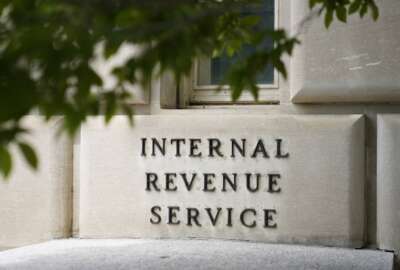Hubbard Radio Washington DC, LLC. All rights reserved. This website is not intended for users located within the European Economic Area.
GSA to push vendors for more data on schedule price variances
The Federal Acquisition Service is launching the Competitive Pricing initiative. GSA is sending letters to vendors to figure out why there are price differences...
wfedstaff | June 4, 2015 8:02 pm
The General Services Administration’s Federal Acquisition Service is trying to move into the world of data analytics to drive management decisions.
It’s part of a four-pronged effort to stay relevant to vendors and customer agencies alike.
Kevin Youel Page, the deputy commissioner of FAS, said the need for change became clearer over the last few years.
“We really today are in an environment where there are declining dollars. The multiple awards schedules program has been flat and in slight decline for years and so we are seeing no particular new opportunity in terms of growth in the program. And we have done not enough, in my opinion, to take the program, which is after all a 60-year-old program that was designed around products and designed in an industrial age, we have done not enough to make this program live and breathe in a dynamic way that we are used to experiencing in our personal and private lives,” Youel Page said Tuesday at the Coalition for Government Procurement’s annual spring conference in Falls Church, Virginia. “We have not done enough to bring ourselves into a world of analytics and true management. The way we see the imperative is we either continue along the path we are on and stagnate and become increasingly irrelevant in a competitive marketplace, or do what we prefer to do and grow.”
The handwriting on the wall for GSA has been clear for some time and many of the initiatives FAS is launching in 2015 have been in the works years.
Youel Page said FAS is focusing its modernization efforts across four areas:
- Ensuring competitive pricing
- Enhancing cycle times for modifications and new orders on schedules
- Improving stakeholder engagement
- Introducing innovation into its processes
Each of these initiatives have distinct projects trying to modernize and improve how the Federal Acquisition Service meets its customer needs and demands.
GSA has been public about several of the projects over the last few months, starting with category management and the Common Acquisition Platform.
While category management is a governmentwide initiative, FAS’ role is huge because much of the data will live in the hallways that reside on the Common Acquisition Platform.
A part of category management is the focus on price. Jeff Koses, GSA’s senior procurement executive, described in an interview with the Federal Drive on April 20 the proposed changes to the price reduction clause, end user software licenses and the proposal for vendors to submit transactional data.
Youel Page said no matter the outcome of these efforts, FAS will continue to collect, analyze and encourage agencies to use price data to make better decisions.
He said FAS is kicking off a new initiative called the Competitive Pricing initiative. GSA is sending letters to vendors to figure out why there are price differences among the same or similar products and services.
“Right now we are finalizing some of the letters, the training to our own contracting officers in GSA and to the data packages that will go out to our vendor partners. I expect those letters to go out in the next couple of weeks as we are rolling out training to our folks in GSA,” Youel Page said. “The expected outcome is that by the end of the year we’ll have entered into discussions with probably around 2,000 of our industry partners who have some of the outlier prices we’d most like to see addressed, and have some answers to whether those prices should be reduced, or whether the value that they are offering at those higher prices is worth continuing to keep on the schedule in the long term. In the short term, our objective is simply to have the conversations and to become more sophisticated in our approach to industry.”
He said while there are trends or specific focus areas for the pricing letters, FAS has been testing out this concept.
“In one case, one of our industry partners, we flagged 30,000 parts on their schedule that appeared to be outliers. After taking action to reduce those prices, this vendor saw his revenues double,” Youel Page said. “It was a real win-win. He was given valuable pricing intelligence and our customers benefited from more aggressive pricing for the same value of goods. It was really through this partner’s realization that he was not marked to market so we were helping him become part of a more competitive pool of vendors.”
He said the competitive pricing initiative is not part of GSA’s plans to go only for low price. Youel Page reassured the industry audience that their concerns about the potential push for lowest price only are not going unheard.
Easing updates for vendors too
But Youel Page said the transactional pricing is important for several reasons.
“The transactional data case is, yes, a little bit about price and trying to understand how volumes can influence pricing. But it’s at least as much about having transparency into what we are buying. We literally have $35 billion a year moving through schedules, which are summarized in product service codes or NAICS codes in the Federal Procurement Data System. We do not know what is going through the program today, and our customers tell us they want help when they come to GSA, ‘Can you help us get our arms around what we are doing?'” he said. “We need these kind of transactional insights, less about price, and more to help our consumers, our partners on the federal side, to get their arms around their own behavior, their own demand signal and around their own requirement.”
Youel Page said once customer agencies understand where their money is going, they will be able to make better decisions based on volume purchases and around their supplier base.
And speaking of the supplier base, Youel Page said FAS also wants to make sure changes to prices are easier for vendors.
He said on May 9 FAS will launch an improved automated price reductions tool for schedule contract holders.
“It’s an adjustment to the tools we have now. Our e-mod program allows a vendor to put in a price reduction and for us to automatically accept that reduction much more quickly than we are able to do today through a manual process,” Youel Page said. “Right now, the widget is a $1 less mod. It could be proposed by the contractor and it’s often proposed with other changes to the contract that is hard to distinguish from the simple price reduction. The change in the tool will allow the price reduction to stand on its own and we will apply some business logic that says approve that even while we are working through some other issues that require human intervention in the mod.”
Along those same lines, Youel Page said FAS is beginning the process to upgrade GSA Advantage and the DoD EMALL. He said the goal is to migrate these tools to a common platform so it’s easier for vendors to upload and modify their product or service catalogs instead of having to upload the catalog to multiple systems.
Mixed reactions so far
Industry reaction to these changes has been cautiously optimistic about many of them, but others have left contractors with some real concerns.
Roger Waldron, the president of the Coalition for Government Procurement, said at the conference that the transactional data reporting and the push for standard end user license agreements are two that GSA needs to consult with industry on more broadly.
“I encourage you to continue the conversation. So for example with the end user supplier agreements, we would encourage you before any sort of final rule is issued have a conversation about the comments received with industry,” he said. “In that case, the devil is in the details and there are some fundamental differences of agreement on potential interpretations on what’s protectable and not protectable with regard to terms and conditions of an intellectual property right. Just engaging in a follow-up conversation before you issue something that becomes contentious or potentially contentious I think it would be something that we would encourage you to do and would appreciate as well.”
Others at the conference said GSA needs to keep in mind the unintended consequences of the new rules or policies. Lowest price technically acceptable (LPTA) is a perfect example of a good concept that went way wrong in government.
And still others said the transactional pricing proposal would put a huge burden on industry, much more than GSA’s initial estimates of six hours. That would become probably the most contentious issue of them all as GSA and industry move forward with the new rule.
Youel-Page said GSA is interested in learning more about the burden and will listen and recalculate as necessary. He said he understands that data isn’t free and these changes will not come at no cost to the government or industry, but there is no other way of getting this information that is important to improve the government’s buying decisions and save money.
RELATED STORIES:
GSA pitches acquisition reforms to Obama
Jeff Koses, Senior Procurement Executive, GSA
GSA proposed rule raises significant concerns over competition
Copyright © 2024 Federal News Network. All rights reserved. This website is not intended for users located within the European Economic Area.
Jason Miller
Jason Miller is executive editor of Federal News Network and directs news coverage on the people, policy and programs of the federal government.
Follow @jmillerWFED
The IRS recovered $1 billion in overdue taxes. Will that save its future funding?
Related Topics





